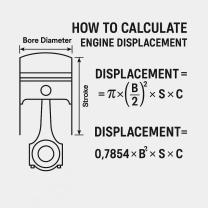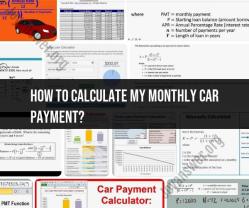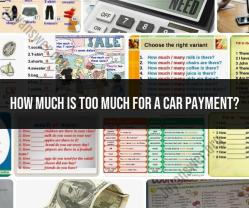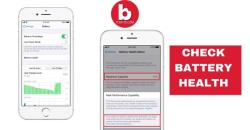How to sell a car to a private person?
Selling a car to a private buyer involves several steps to ensure a smooth and successful transaction. Here's a step-by-step guide:
1. Prepare the Vehicle:
- Clean the car both inside and out.
- Complete any necessary repairs or maintenance to ensure the car is in good working condition.
- Gather all the vehicle's documents, including the title, maintenance records, and the owner's manual.
2. Determine the Car's Value:
- Research the current market value of your car. You can use online resources, such as Kelley Blue Book or Edmunds, to get an estimate.
3. Set the Selling Price:
- Decide on a fair and competitive selling price for your vehicle based on its condition, mileage, and market value. Be prepared to negotiate.
4. Create a Compelling Listing:
- Take high-quality photos of the car from various angles, inside and out.
- Write a detailed and honest description of the vehicle, highlighting its key features, maintenance history, and any recent improvements.
- Include the selling price in your listing.
5. Advertise the Car:
- Post your car for sale on online platforms such as Craigslist, AutoTrader, or local classifieds. You can also use social media platforms or car-specific forums.
- Be cautious when sharing personal information, and consider using a dedicated email address or phone number for inquiries.
6. Respond to Inquiries:
- Promptly respond to potential buyers' inquiries and provide them with the information they request.
- Be prepared to answer questions about the car's history, maintenance, and reason for selling.
7. Schedule Test Drives:
- Arrange test drives with interested buyers in a safe and public location.
- Ensure that the potential buyers have a valid driver's license and insurance.
8. Negotiate the Price:
- Be prepared to negotiate with potential buyers. Consider setting a minimum acceptable price and be willing to walk away if the offers do not meet your expectations.
9. Verify the Buyer's Identity:
- Before accepting an offer, verify the buyer's identity and their intent to purchase the vehicle.
- Make sure the buyer is genuinely interested and financially capable.
10. Complete a Bill of Sale:- Draft a bill of sale, including the car's details, sale price, and the buyer's and seller's information. You can find templates online or use one provided by your local Department of Motor Vehicles (DMV).
11. Transfer the Title:- Sign over the car's title to the buyer, and make sure you follow your state's DMV guidelines for the title transfer.- Remove your license plates and return them to your local DMV if required.
12. Get Payment:- Receive payment from the buyer, which can be in the form of cash, a cashier's check, or a secure online payment service.- Be cautious of potential scams and verify the authenticity of the payment.
13. Provide a Receipt:- Issue a receipt to the buyer, confirming the payment and the transfer of ownership.
14. Cancel Insurance and Registration:- Contact your insurance company to cancel coverage for the sold vehicle.- Notify your local DMV of the sale to cancel or transfer the vehicle's registration.
15. Remove Personal Items:- Remove all personal items from the vehicle, including registration, insurance, and any valuables.
16. Complete the Sale:- Sign any required documents and hand over the keys to the buyer.
17. Keep a Record:- Keep copies of all relevant documents, including the bill of sale, for your records.
18. Report the Sale:- In some states, you may need to report the sale to the DMV to avoid any liability for the vehicle in the future.
Selling a car to a private buyer requires attention to detail, good communication, and awareness of potential scams. It's essential to ensure a safe and legal transaction, both for you as the seller and the buyer.
Selling a Car to a Private Person: A Comprehensive Guide
Selling a car to a private individual can be a straightforward and profitable endeavor if done correctly. By following a systematic approach and taking the necessary precautions, you can ensure a smooth and successful transaction. Here's a comprehensive guide to selling your car to a private person:
Preparation:
Gather Vehicle Documentation: Collect all essential documents related to your car, including the title, registration, maintenance records, and any repair history.
Determine Fair Market Value: Research the fair market value of your car using online resources like Kelley Blue Book or Edmunds. Consider factors like mileage, condition, and optional features.
Clean and Detail the Car: Enhance your car's appeal by thoroughly cleaning the interior and exterior. Address any minor cosmetic issues to create a positive first impression.
Take High-Quality Photos: Capture clear and well-lit photos of your car from various angles. Showcase the car's interior, exterior, and any unique features.
Craft a Compelling Description: Write a detailed and informative description of your car. Highlight its key selling points, features, and any recent maintenance or upgrades.
Listing and Marketing:
Choose Suitable Listing Platforms: Select appropriate online car selling platforms to reach a wider audience. Consider popular options like Craigslist, Facebook Marketplace, and Autotrader.
Create an Appealing Ad: Use your high-quality photos and compelling description to create an attention-grabbing ad. Include the car's details, price, and your contact information.
Respond Promptly to Inquiries: Be responsive to inquiries from potential buyers. Answer their questions promptly and provide additional information as needed.
Schedule Test Drives: Arrange test drives for interested buyers. Choose a safe and public location for test drives and accompany the buyer during the ride.
Negotiation and Closing:
Be Prepared to Negotiate: Expect some negotiation on the asking price. Be willing to compromise within a reasonable range to reach an agreeable price.
Verify Buyer's Information: Before accepting payment, verify the buyer's identity and financial means to avoid scams.
Complete Bill of Sale: Prepare a bill of sale that outlines the details of the sale, including the car's information, price, and both parties' signatures.
Transfer Vehicle Title: Sign and transfer the vehicle title to the buyer upon receiving full payment. Inform the Department of Motor Vehicles (DMV) about the sale.
Cancel Insurance and Inform DMV: Cancel your car insurance and notify the DMV to remove your name from the registration.
Additional Tips:
Safety Precautions: Take safety precautions during test drives. Choose a public location, accompany the buyer, and consider bringing a trusted friend or family member along.
Be Honest and Transparent: Provide accurate and honest information about the car's condition and history. Avoid misrepresenting any facts to avoid legal issues.
Patience and Flexibility: Maintain patience and flexibility throughout the process. Understand that selling a car may take time, and be willing to adapt your approach as needed.












